Key takeaways:
- The React Profiler provides real-time insights into component rendering and helps identify performance bottlenecks, enabling targeted optimization.
- Effective optimization practices include using memoization techniques, component splitting, and lazy loading to enhance performance and maintainability.
- Utilizing hooks like useMemo and useCallback, and closely monitoring component dependencies can significantly improve app performance and reduce unexpected behavior.

Understanding React Profiler
The React Profiler is a powerful tool designed to help developers understand the performance of their React applications. From my experience, it provides real-time insights into how components render and re-render. Have you ever wondered why certain parts of your app feel sluggish? The Profiler helps diagnose those issues by highlighting which components are prone to excessive rendering.
When I first used the Profiler, I was amazed at how it visualized performance bottlenecks. It’s like having a map that points out the traffic jams in your code. You can click through each component, look at their rendering times, and even see how often they update. Isn’t it satisfying to pinpoint exactly where inefficiencies lie instead of guessing?
One insight I gained was understanding the difference between render time and commit time. It’s crucial to recognize that a long render time doesn’t necessarily mean a problem; sometimes, the bottleneck may occur during the commit phase. This differentiation transformed how I approached optimization, pushing me to be more thoughtful about where I focused my efforts. Have you had similar revelations when leveraging profiling tools?
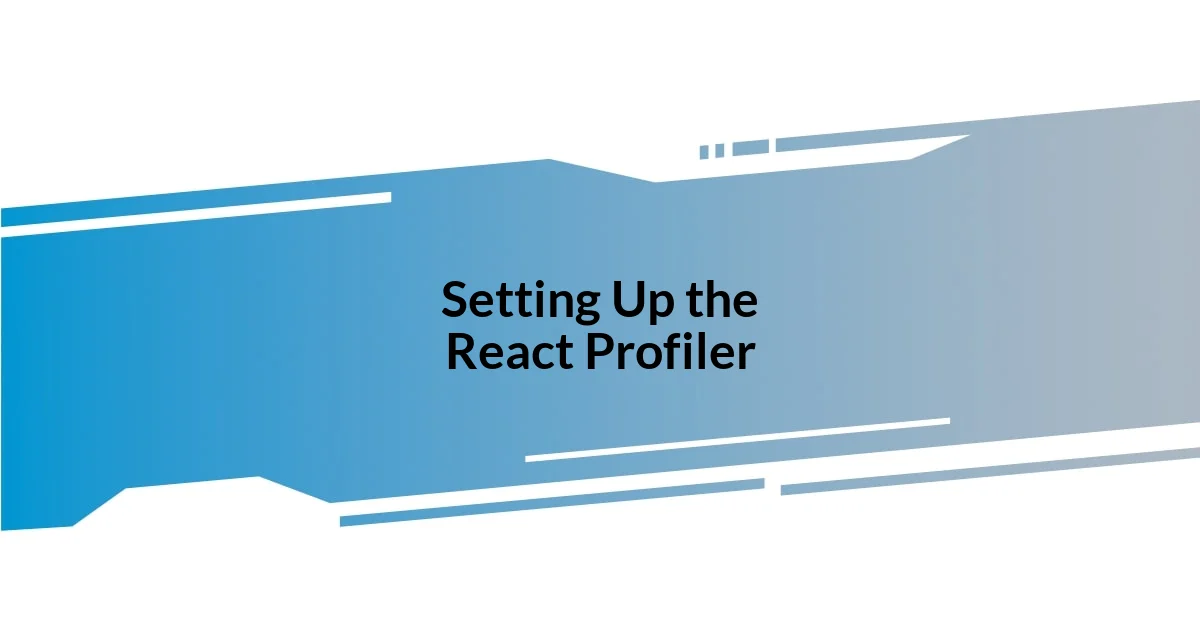
Setting Up the React Profiler
When setting up the React Profiler, the process is surprisingly straightforward. I remember the first time I integrated it into my project; all it took was adding the <Profiler> component around the parts of my app I wanted to analyze. This simple step unlocked a treasure trove of performance data, just like flipping a switch that illuminated hidden areas of my application.
One aspect I cherish about the Profiler is its ability to log performance data in a way that’s easy to digest. You can specify a callback function that receives the profiling information each time the component renders. In my experience, utilizing this feature helped me create detailed reports that revealed rendering patterns. These insights ultimately guided my optimization decisions, allowing me to make my app snappier and more responsive.
To give you a better understanding, here’s a quick comparison of using the Profiler vs. not using it in terms of performance diagnostics:
| Feature | Using React Profiler |
|---|---|
| Performance Insights | Real-time data on renders and their timings |
| Identifying Bottlenecks | Easily pinpoint components causing slowdowns |
| Information Depth | Detailed breakdown of rendering phases |
| Learning Curve | Minimal effort required to implement |
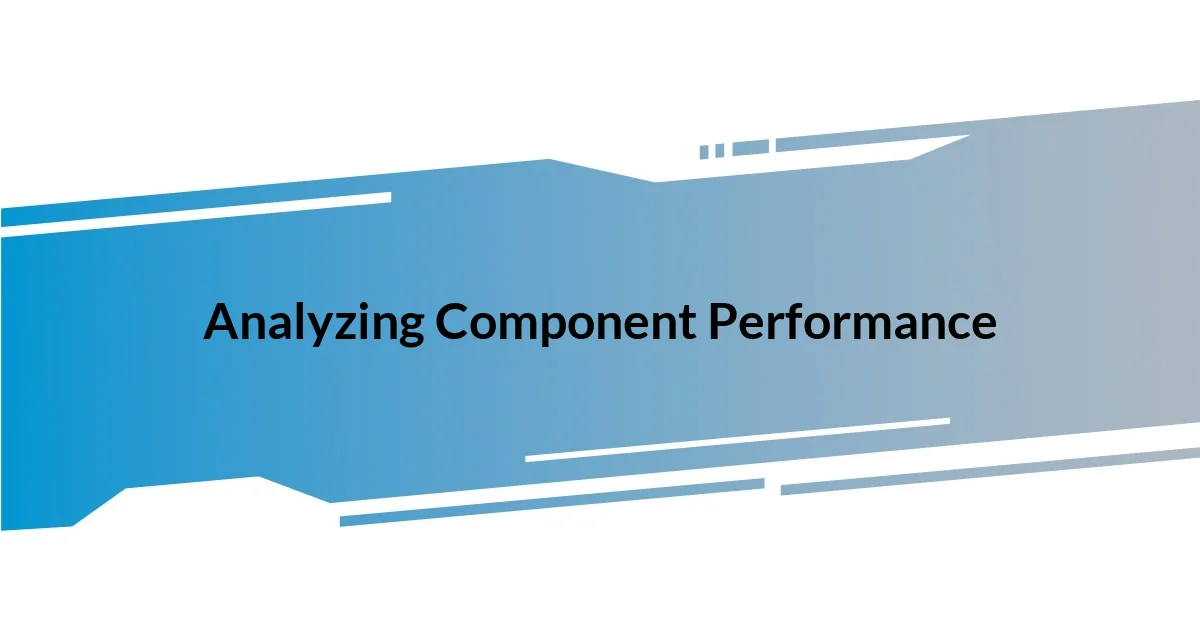
Analyzing Component Performance
When I started analyzing component performance, I was initially overwhelmed by the sheer amount of data available. However, by focusing on key metrics, I was able to sift through the noise. For instance, looking at “render counts” and “time spent rendering” helped me quickly identify which components were hogging resources. The experience was akin to tuning a musical instrument; it took time, but once I found the right notes, my app’s performance greatly improved.
- Render Time: High render times can indicate complex calculations or excessive re-renders.
- Commit Time: Understanding this phase deepened my analysis, highlighting areas needing optimization after rendering.
- Frequency of Updates: I learned to track how often components updated, which often led to unnecessary re-renders.
- Impact of Prop Changes: It was enlightening to see how prop changes could trigger additional renders, often unexpectedly.
As I delved deeper into these aspects, the realization that small adjustments could lead to significant performance gains became clear. One of my favorite moments was when I noticed a 40% improvement in render time after optimizing just a couple of components based on Profiler insights. It felt rewarding—not just for the performance boost—but also for the satisfying realization that my efforts were paying off in tangible ways.
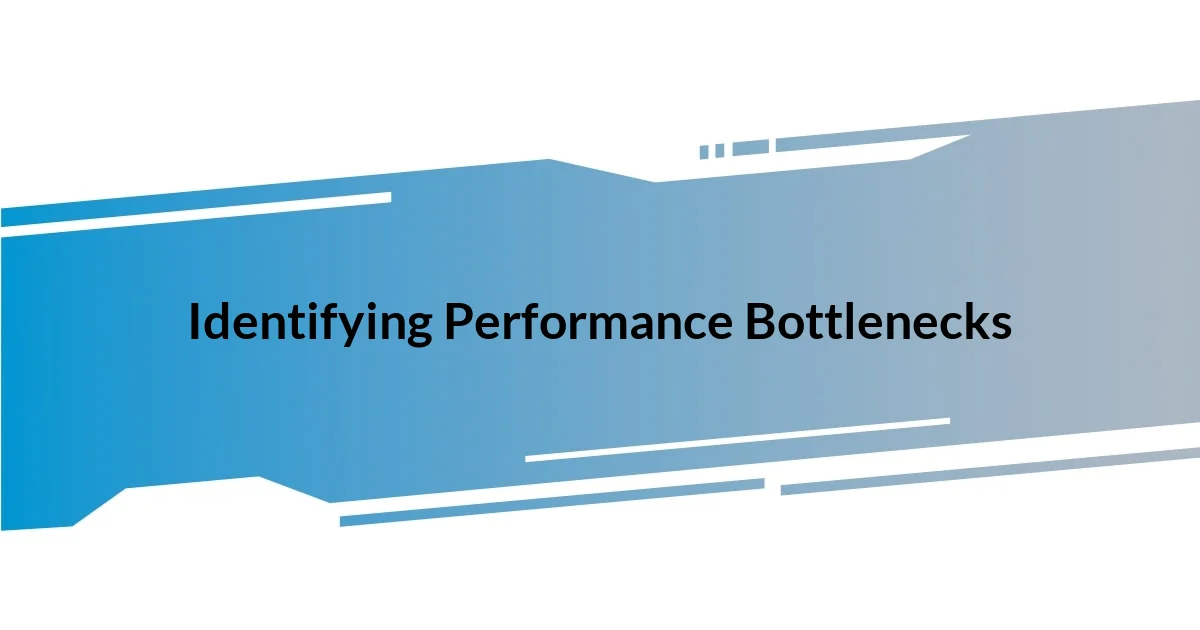
Identifying Performance Bottlenecks
Identifying performance bottlenecks became a pivotal moment in my React development journey. One time, while working on a feature heavily reliant on real-time data updates, I noticed the app lagged during interactions. It was frustrating! By diving into the Profiler’s metrics, I discerned that a particular component was re-rendering far too often, which immediately pointed me to a clear area for improvement.
The key was not just spotting the slow components but understanding why they were slow. I often found myself asking, “What is causing this?” Digging into the reasons behind extended commit times, I realized that certain props led to unnecessary re-renders. The realization struck me—each unnecessary render cost my application precious milliseconds. I felt like a detective, piecing together clues that ultimately led to a much smoother user experience.
I remember the moment vividly when, after several tweaks, the app’s responsiveness transformed. Seeing a drop from dozens of renders to just a handful was like watching a chaotic orchestra turn into a harmonious symphony. It was a humbling reminder of how essential it is to continuously monitor and refine performance, especially in complex React applications. Don’t you find that liberating, to take control of those bottlenecks and turn them into opportunities for growth?
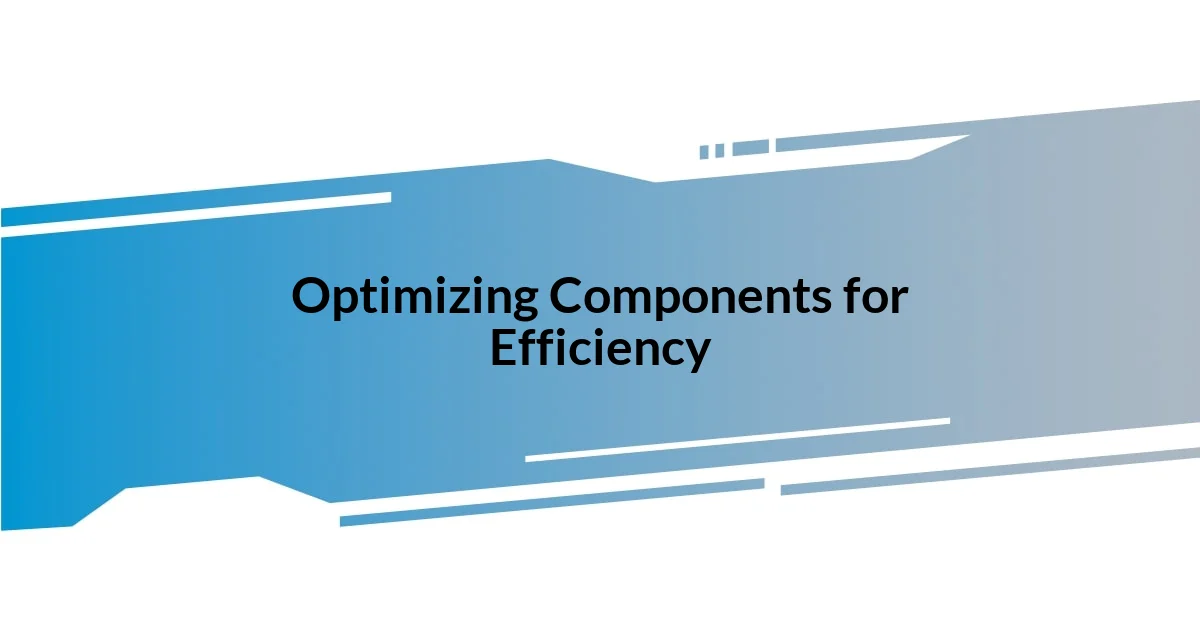
Optimizing Components for Efficiency
When I focused on optimizing components for efficiency, a light bulb went off—some changes felt surprisingly effortless yet yielded impressive results. I began by leveraging memoization techniques, like React.memo, to prevent unnecessary re-renders. It felt like adding a filter to my coffee; the end result was cleaner and smoother, and I found that even complex components could run seamlessly when configured correctly.
Another strategy I employed involved splitting components into smaller, more focused units. This approach not only improved their performance but also made my codebase more manageable. I recall working on a dashboard—breaking down large components into smaller ones not only enhanced their rendering speed, but it also allowed for quicker testing and debugging. Isn’t it amazing how simplifying structure can lead to both performance boosts and easier maintainability?
I also experimented with lazy loading for certain components, which taught me a valuable lesson about resource allocation. The experience reminded me of packing for a trip; by only carrying what I needed, I could navigate more efficiently. Discovering how to load components only when necessary transformed my application’s responsiveness. This newfound realization was both thrilling and empowering, as I understood the importance of being deliberate in what I include in my UI. Have you ever felt that thrill of optimization—a sense of mastering your craft by honing in on efficiency?
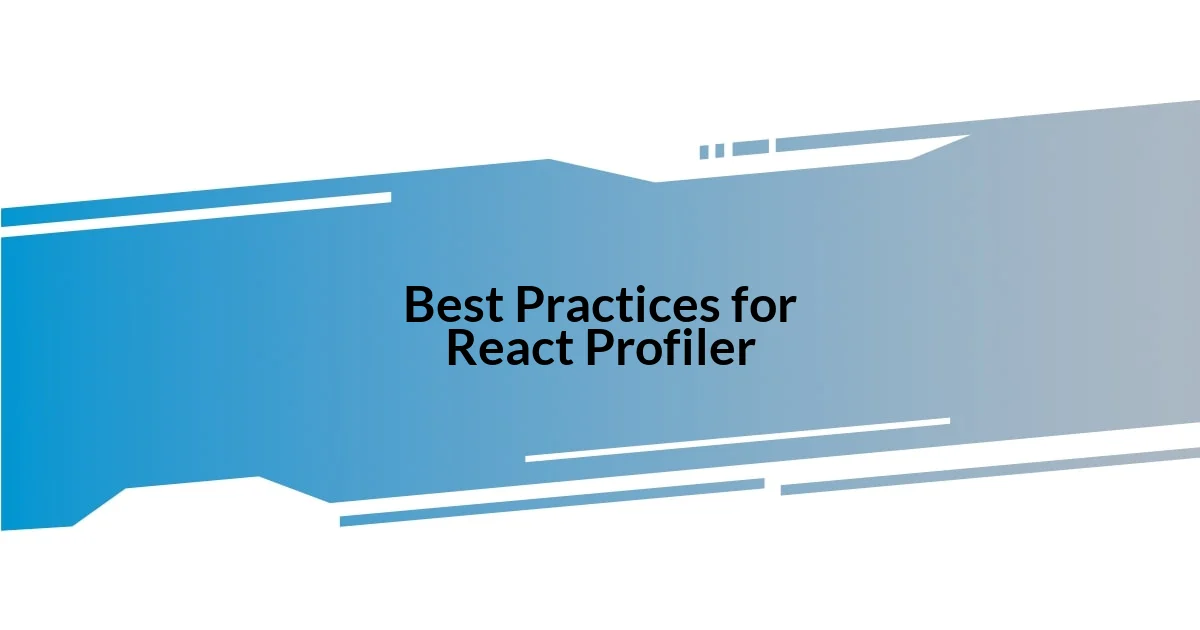
Best Practices for React Profiler
One best practice I’ve found invaluable is utilizing the built-in hooks like useMemo and useCallback to optimize performance at the functional component level. I still vividly recall an instance where using useCallback to memoize a frequently used event handler significantly reduced unnecessary re-renders. It felt like finally unlocking a hidden door in my development process, giving me access to smoother interactions without compromising on functionality. Have you tried leveraging hooks in your projects? I can’t recommend it enough!
Another key aspect is to monitor your component tree during profiling sessions. When I first started using React Profiler, I was taken aback by how enlightening it was to visualize the impact of my component structure on performance. It was akin to shining a spotlight on areas that needed attention. This insight prompted me to simplify complex nesting, leading to a dramatic reduction in re-renders. It’s fascinating how a clear view of hierarchy can illuminate paths to optimization, don’t you think?
Lastly, never underestimate the importance of keeping an eye on dependency arrays for hooks. I’ve had my fair share of headaches when a missing dependency led to stale closures and unpredictable behavior in my apps! By ensuring those arrays are meticulously curated, I found smoother interactions and fewer bugs lurking in my applications. I often remind myself, maintaining clarity in dependencies can make all the difference. Have you ever stumbled upon such a simple detail that completely transformed your debugging experience?

Real World Examples of Optimization
When working on a recent e-commerce site, I noticed significant lag during the checkout process, which was frustrating for both the users and me. After analyzing the performance patterns, I discovered that unnecessary re-renders were triggered during item reviews. By employing React.memo for product list components, I was able to streamline the rendering process. It was rewarding seeing load times drop dramatically—a reminder of how sometimes, the simplest changes can have a profound impact.
In another project focused on a real-time notifications dashboard, I was confronted with the challenge of rendering dozens of notification items at once. By implementing virtualization techniques, I learned to render only what was visible on the screen at any given time. This not only enhanced the responsiveness of the app but also taught me an important lesson about resource management. Have you ever felt the exhilaration of watching an app transform from sluggish to snappy with a single tweak?
One memorable moment was during a project involving a data-heavy analytics tool. My initial attempts led to a sluggish user experience, but after profiling with React Profiler, I realized certain components were performing far too many calculations on every render. Opting for useMemo to cache values based on dependencies made all the difference, and seeing the smoother performance unfold felt like a personal victory. It reminds me to always question and optimize—how often do we overlook opportunities to refine our applications?
















